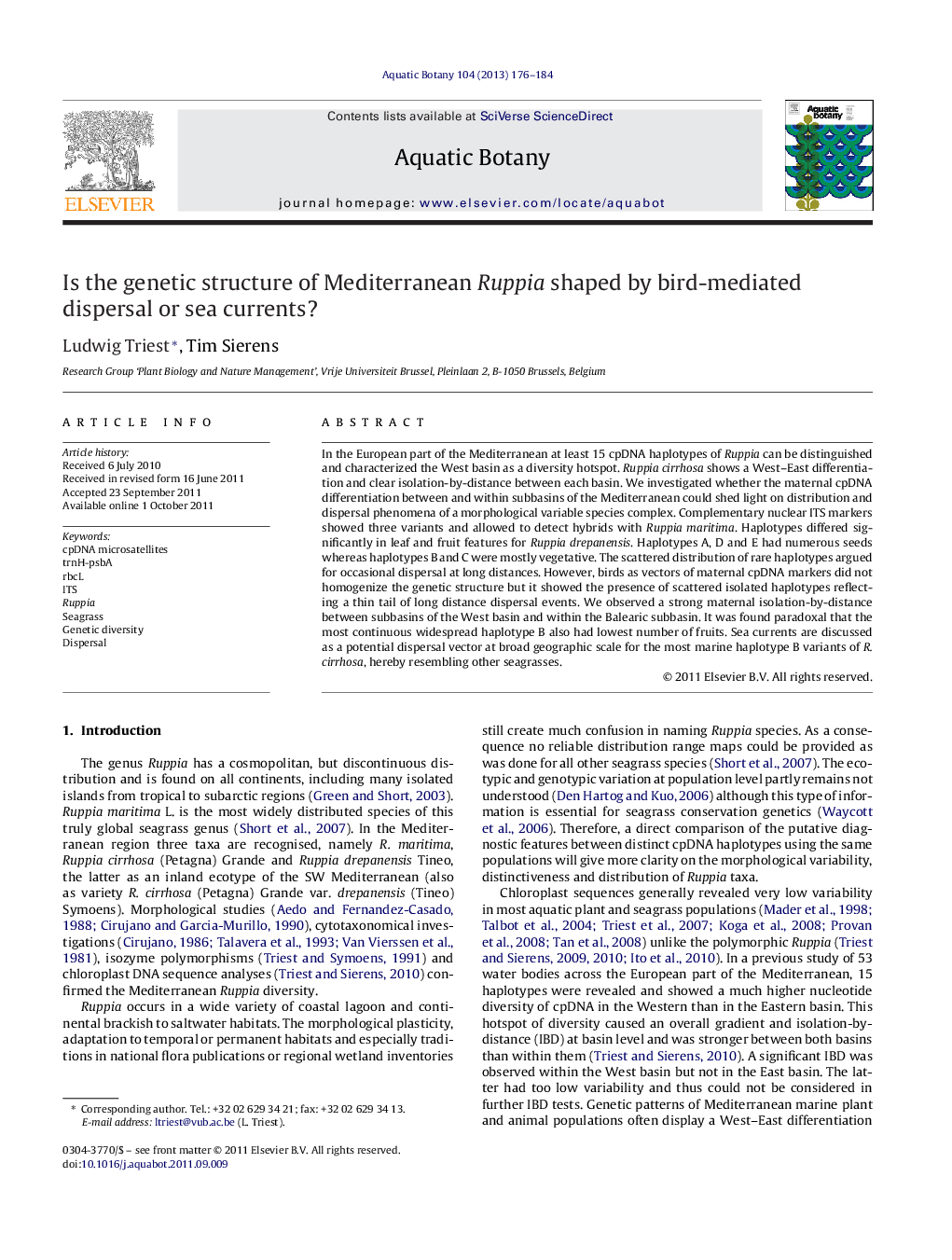| کد مقاله | کد نشریه | سال انتشار | مقاله انگلیسی | نسخه تمام متن |
|---|---|---|---|---|
| 4527981 | 1625838 | 2013 | 9 صفحه PDF | دانلود رایگان |

In the European part of the Mediterranean at least 15 cpDNA haplotypes of Ruppia can be distinguished and characterized the West basin as a diversity hotspot. Ruppia cirrhosa shows a West–East differentiation and clear isolation-by-distance between each basin. We investigated whether the maternal cpDNA differentiation between and within subbasins of the Mediterranean could shed light on distribution and dispersal phenomena of a morphological variable species complex. Complementary nuclear ITS markers showed three variants and allowed to detect hybrids with Ruppia maritima. Haplotypes differed significantly in leaf and fruit features for Ruppia drepanensis. Haplotypes A, D and E had numerous seeds whereas haplotypes B and C were mostly vegetative. The scattered distribution of rare haplotypes argued for occasional dispersal at long distances. However, birds as vectors of maternal cpDNA markers did not homogenize the genetic structure but it showed the presence of scattered isolated haplotypes reflecting a thin tail of long distance dispersal events. We observed a strong maternal isolation-by-distance between subbasins of the West basin and within the Balearic subbasin. It was found paradoxal that the most continuous widespread haplotype B also had lowest number of fruits. Sea currents are discussed as a potential dispersal vector at broad geographic scale for the most marine haplotype B variants of R. cirrhosa, hereby resembling other seagrasses.
► We studied genetic diversity in Mediterreanean populations of a seagrass.
► Isolation by distance was found within the Western basin.
► Genotypes, distribution and morphology revealed a paradox.
► The most continuous and widespread haplotypes had lowest number of fruits.
► Sea currents are discussed as potential vector at broad geographic scale for the most marine variants
Journal: Aquatic Botany - Volume 104, January 2013, Pages 176–184